Before anything else, it is time to twist the blow to some received ideas ....
The relatively high weight of Iberian saddles is largely offset by their excellent load distribution. It is easier and less tiring to carry a heavy load spread over a large area, than a lighter weight but spread over a small area. Be aware that a few decades ago, Iberian saddles weighed about twenty kilograms, but nowadays, with modern materials, an Iberian saddle weighs between approx. 8 and 12kg, when one knows that an English saddle weighs between approx. 6 to 8 kg, it is not so huge. We invite you to read our folder on the subject, "the weight of the saddle, a criterion of choice"? After some riders say that it is for them that the saddle should not be too heavy, for them who must hoist the saddle on the back of their horse .... One can understand it, but it also seems selfish, provided of course that the rider does not have any physical problem, to privilege the comfort of the rider who will carry the saddle a few minutes, compared to the comfort of the horse that will support the weight of the saddle AND of the rider for several hours ...
Then, yes, a thousand times yes, it is absolutely possible to make rising trot, to gallop in suspension and even to jump a few isolated obstacles (we do not speak to chain a course to 1m50 obviously) with a saddle Iberian. Yes, yes, YES ! If you have an Iberian saddle and you do not manage to make rising trot, gallop in suspension and jump, it is that the seat of your saddle is not adapted to your morphology, it is too short for you. That's all. An Iberian saddle must frame, it must not block.
Finally, we often hear complaints that the Iberian saddle is too thick for dressage ... Ask the Spanish and Portuguese riders who only ride with that, to the excellent riders who do wonders in Jerez and Queluz with their old good fat Iberian saddles ... Especially since today, with the new flexible trees, the Iberian saddles of quality have gained a lot in fineness of contact. The fineness of the seat and the fineness of the horse are obtained with any saddle if the rider has the means of it.
IN SPAIN, there are the working saddle and the dressage saddle.
The working saddle is the so-called "vaquera saddle". It is the working saddle of Spanish cattle, which is used in the "campo", in the fields, to guard and drive the herds, intended to be carried by a horse and to accommodate a rider during long hours, every day. Thus it is a very comfortable saddle for both the rider and the horse, thanks to its flat and wide seat, and its wide and thick padding which spreads out excellently the loads.
These saddles are therefore perfectly adapted to the practice of horse trail. There are also front saddlebags and saddlebags adapted to vaquera saddles, available for sale on our website.
The vaquera saddle is also versatile, and it is possible to do dressage (do not forget that the doma vaquera includes a dressage test!)
However, these saddles offer the riders a rather untrained position with their legs slightly forward, they are not ideal for classical dressage, but if you practice Iberian dressage and / or horse trail and / or cattle work, then the vaquera saddle is perfect for this purpose. There are also now also vaquera saddles with classic girth system and classic stirrup leathers system for more comfort of use for the rider.
Saddle vaquera:
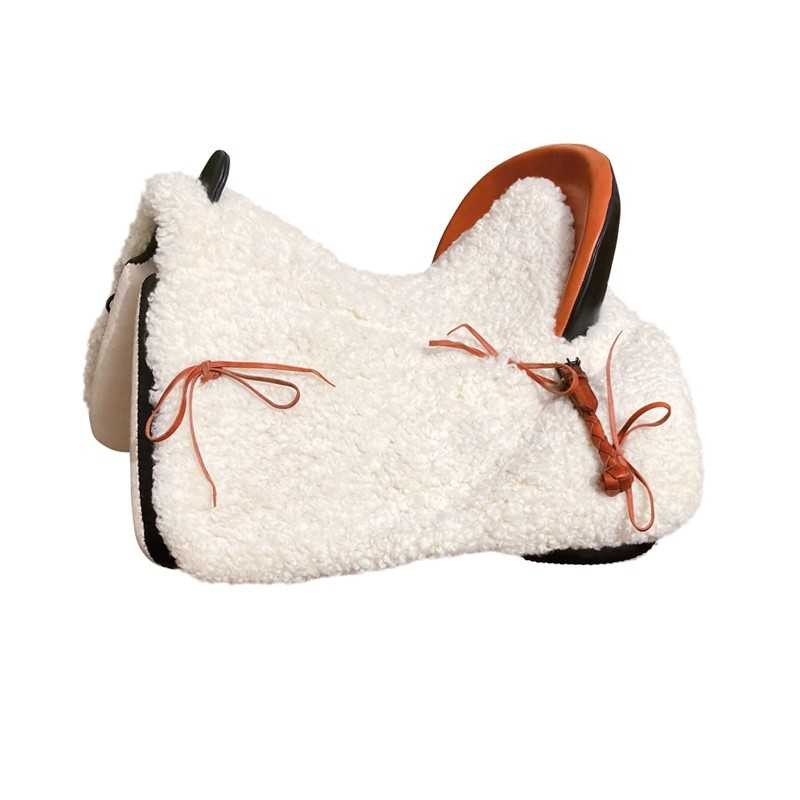
The dressage saddle is the so-called "Spanish saddle" and its derivatives (potrera, alta escuela, etc). This is the Spanish dressage saddle. The name of the Potrera saddle comes from the word "potro" which means "foal" in Spanish, it is the saddle of first riding, framing and reassuring .... But not exclusively!
These saddles take on the construction and comfort characteristics of the vaquera saddles with a flat and wide seat and wide panels but offer a more delicate contact and a more academic position. They offer a good academic position to the rider, but without constraining him, they guarantee him security but without wedging it. They are also very comfortable, in addition to being very pretty. These saddles also make it possible to work cattle in the "campo" and are therefore perfectly adapted to the practice of horse trail.
Spanish saddle Potrera:
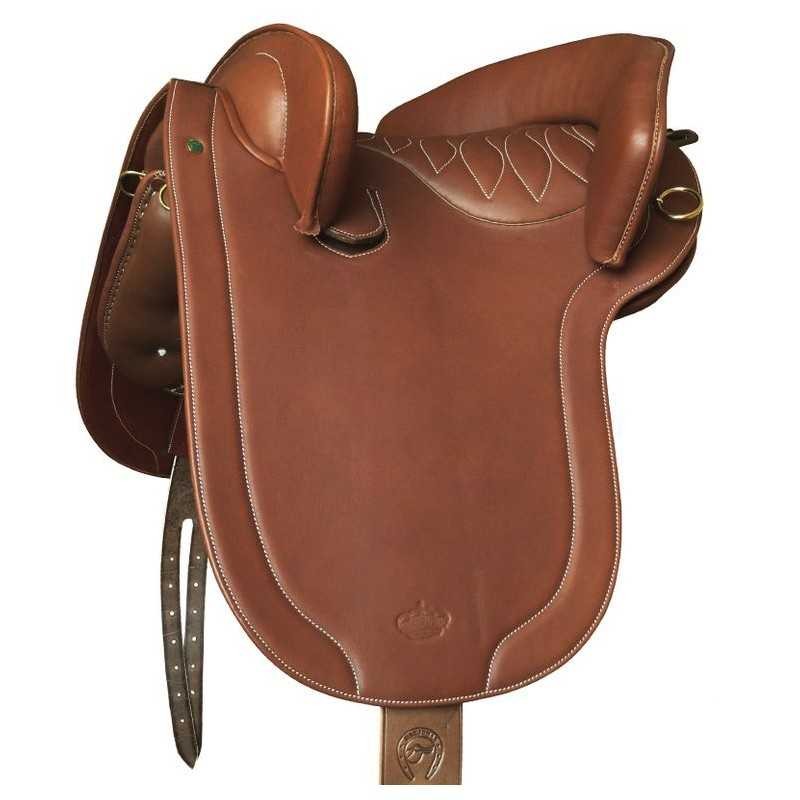
IN PORTUGAL, it is the same principle, there are the working saddle and the dressage saddle.
For the cattle work, there is the so-called saddle "campino" qwhich really looks like a vaquera saddle but without cantle.
Saddle Campino:
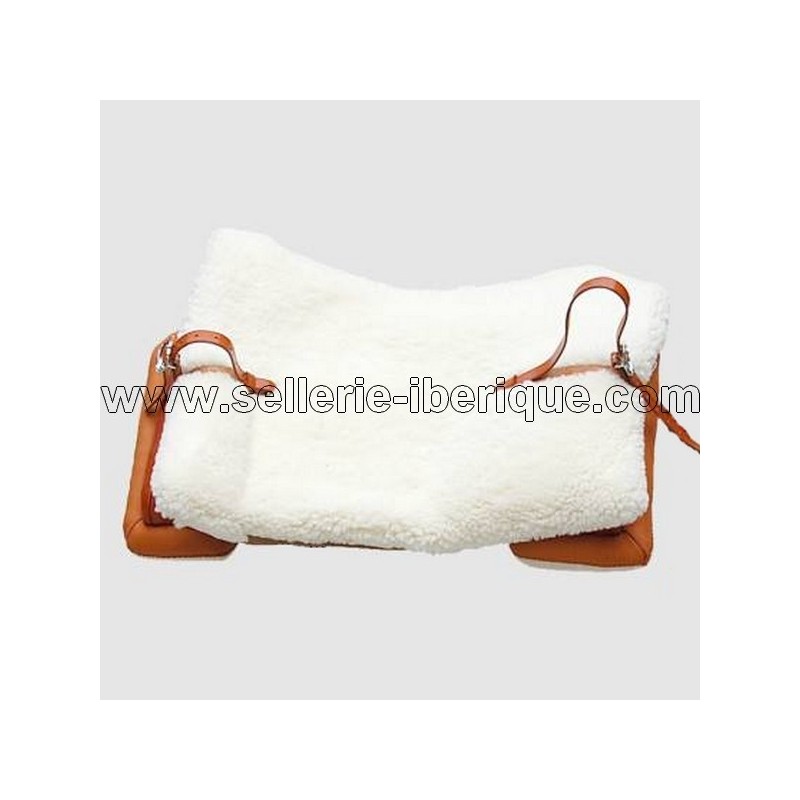
There is also the so-called saddle « bullfighting saddle », saddle that was also used by the French riders in the time of our great squires, and that still use their "descendants" today. Just like the vaquera saddle, the bullfighting saddle provides unrivaled comfort to rider and horse, allows the practice of the cattle work, and thus of the horse trail, but it offers a more academic position, it is therefore also perfect for the Dressage and especially for the tunes of high school because it offers an excellent maintenance to the rider.
Bull fighting saddle:
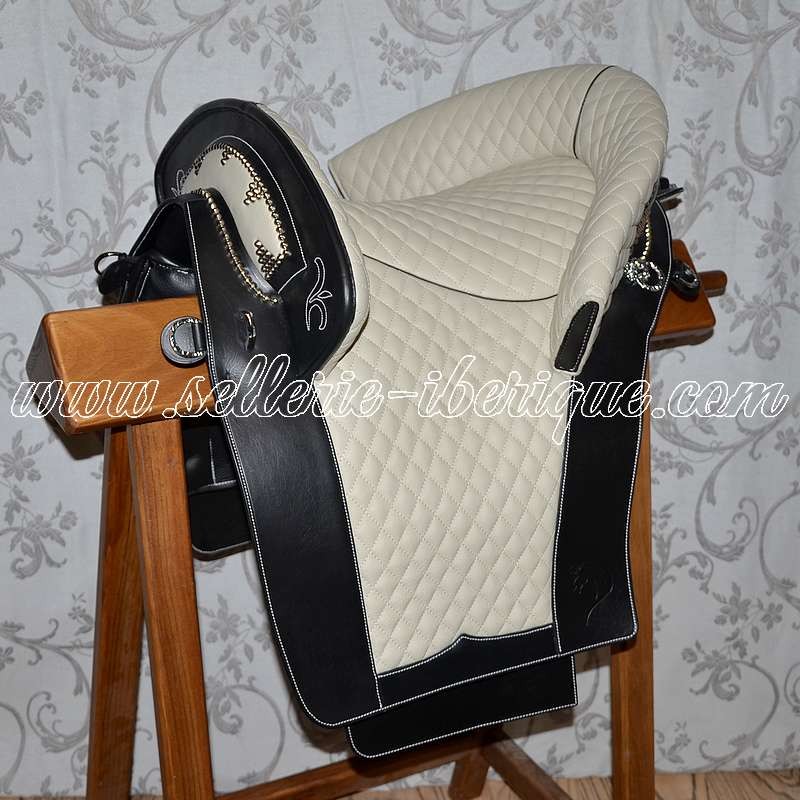
The dressage saddle is the so-called "Relvas saddle". These saddles are equipped with an English saddle tree, so you will find the fineness and position of a classic saddle! Tree who is then dressed in Portuguese fashion to stick the best to the tradition. It is no longer a strictly speaking working saddle, but rather a pure classical dressage saddle, offering a very English position, and having a smaller load distribution, less adapted to horse trail, but quite usable in non-intensive outdoor riding. There are models without pommel or with pommel to offer more maintenance to the rider.
Relvas saddle without pommel:
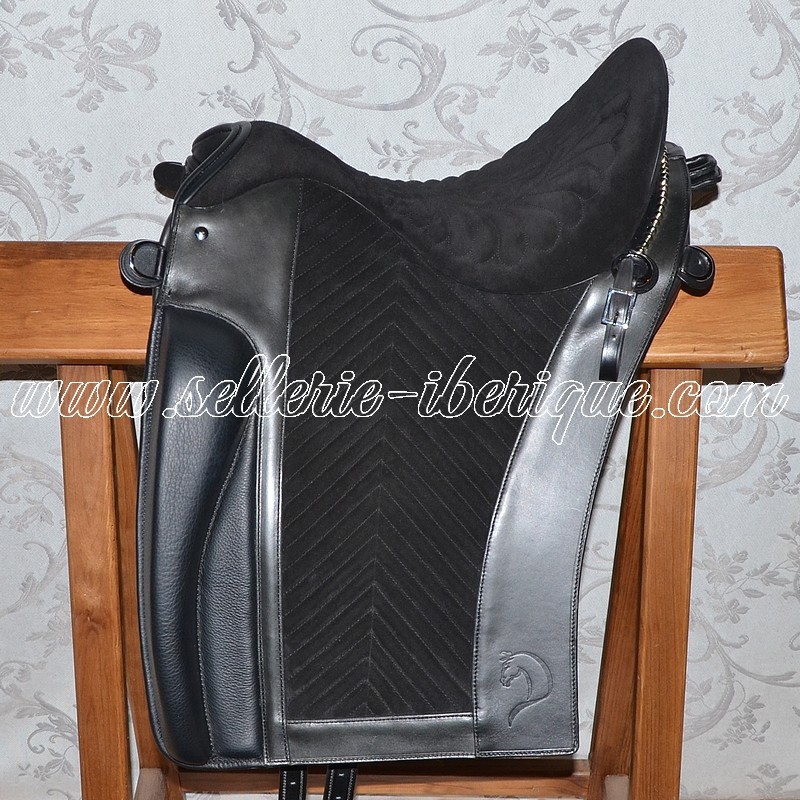
Relvas saddle with pommel:
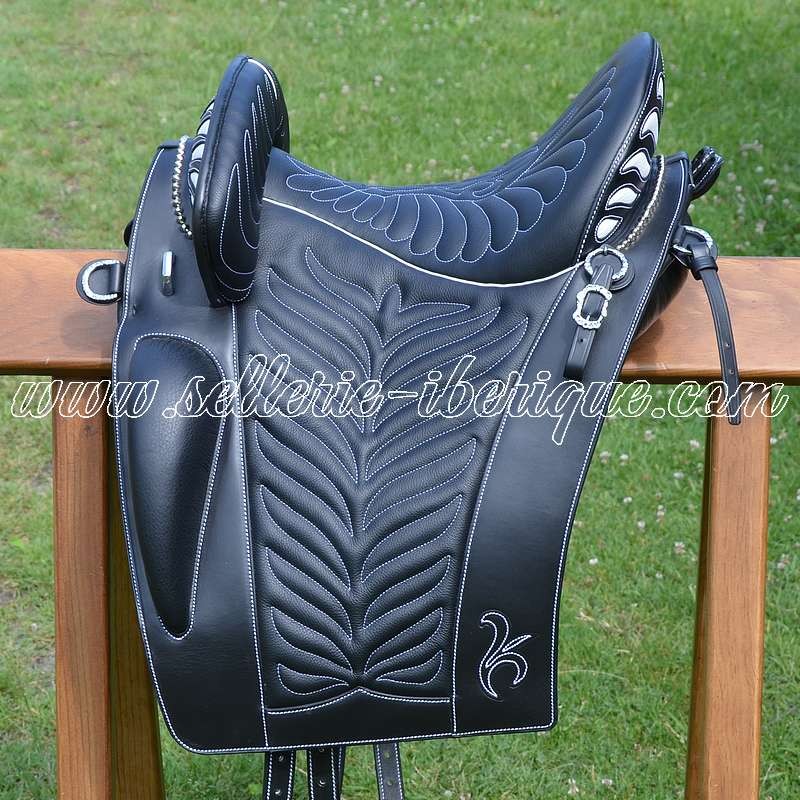
Now you have to make your choice according to your budget, your practice, your affinities, your favorite brands ...
Folder written by the Sellerie La Garrocha; the reproduction, even partial, of this text is prohibited without prior agreement.
